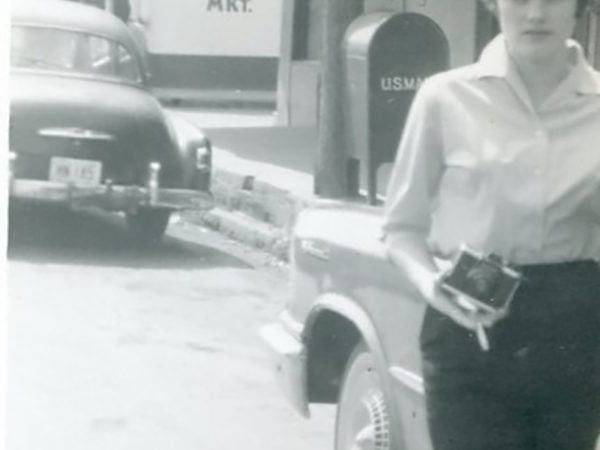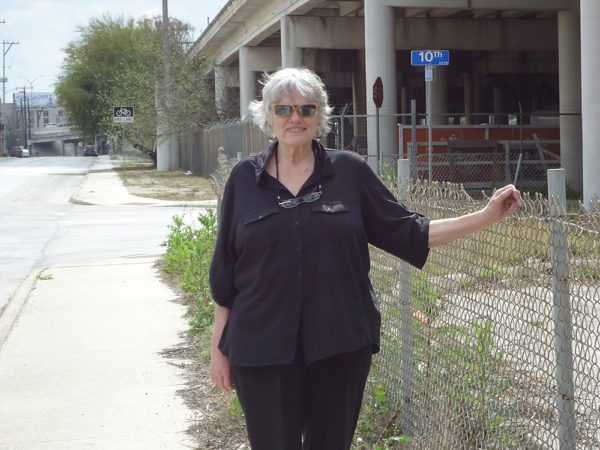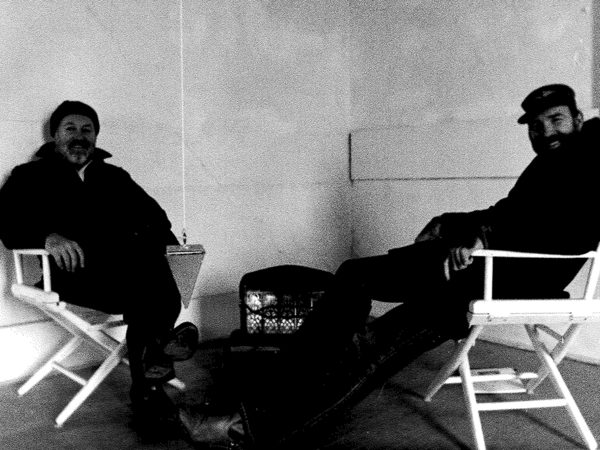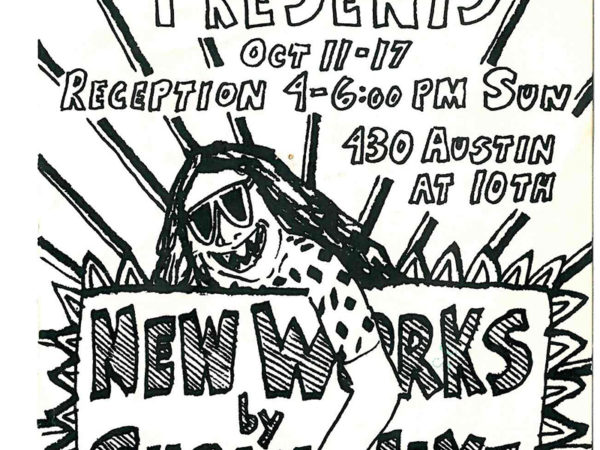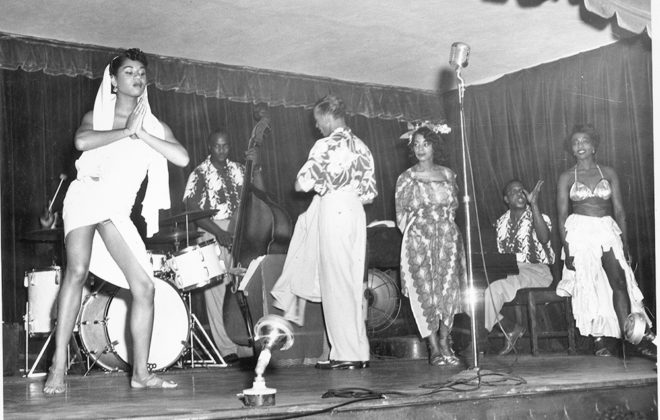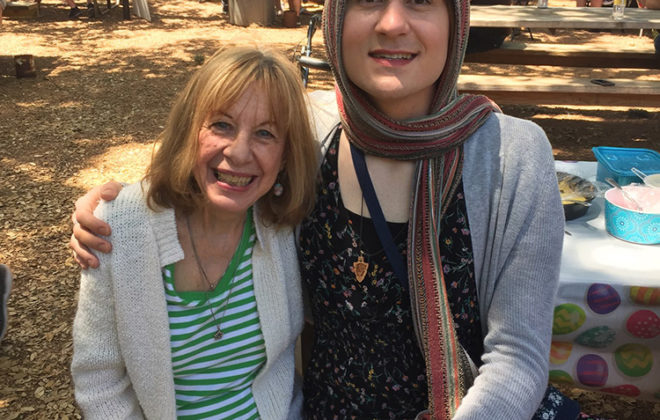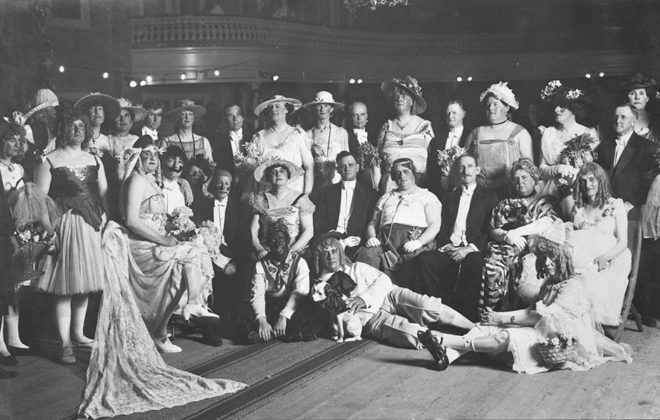Austin Street, Ghostly Sentinel of San Antonio’s Queer Past
Disclaimer:
by Melissa Gohlke
Nearly all scholars of queer history acknowledge the difficulty of excavating the queer past when traces of such histories were often submerged, hidden, or eradicated. Print material that exists for decades prior to the 1970s, depicts gays and lesbians as deviant and aberrations of nature. My task at hand is to peel back the layers that obscure the lived experiences of queer folks that inhabited San Antonio over many decades. Through diligent detective work and a helping dose of serendipity, I unveil the history of queer San Antonians, one chapter at a time.
Austin Street
During the 36 years I have lived in San Antonio, on a regular basis, I drive past a little stretch of road just north downtown—Austin Street. The top of the few remaining buildings peak out onto the I37/281N interchange. Both buildings are tan stone; one has an unusual cupola on the roof. The area is relatively desolate. A few industrial type buildings appear to house businesses. Other than that (except for some gentrification creeping into the area), the street is quiet, weeds coming up through cracks in the sidewalk, a chain link fence discouraging trespassing under the freeway. Non-descript, derelict, decaying.
Glancing at the street, which is only a few blocks long, one would never imagine that Austin Street at 10th Avenue was once the site of a pulsing, vibrant queer world. In fall of 2011, a fellow archivist made a discovery that changed how I viewed Austin Street and altered the trajectory of my research.
Evidence of queer life surfaced on Austin St. on an off-limits list issued by a Colonel at Fort Sam Houston in 1945. Off-limits lists were an offshoot of federal legislation crafted during World War II to regulate the moral and sexual behavior of military personnel. Of the fifty-six establishments on the list, two were nestled in a corner of Austin Street. The Commande Bar was on the list at the “owner’s request,” which possibly signaled a proprietor trying to protect his homosexual patrons from disruptions by military police. A residence deemed out of bounds made the list due to “morals” violations, a sign of same-sex interactions.[1]
Austin Street and the adjacent east side were hotbeds of activity deemed socially deviant by mainstream San Antonians. Gambling dens, prostitution, and dive bars populated the streets. Just south of Fort Sam Houston, these unwholesome diversions attracted scores of military personnel despite off-limits designations.
In the wake of the war and the beginning of a new decade, Austin Street held its place as a site of homosexual encounters. In 1951, the Acme bar, an establishment fully entrenched as queer turf by the 1960s, appeared in the city directory at 505 Austin Street. Carolyn Weathers, a patron at the bar in the early 60s recalls that the area appeared abandoned except for the Acme and the Sing Lee Grocery and Market. An aerial photograph from 1963 confirms Carolyn’s perceptions of the area. The Acme and surrounding buildings look like apparitions in a desolate landscape.[2]
![Austin_Street_1963 aerial The Acme and adjacent structures appear on the upper left off Austin Street, 1963; across the street is the abandoned railway [https.//historicaerials.com]](https://transamerican.mcnayart.org/wp-content/uploads/2019/06/Austin_Street_1963-aerial-600x450.jpg)
By the late 1960s most buildings on the west side of Austin Street had disappeared to make way for the I37 and 281 interchange. Construction of the freeway wiped out any traces of the Acme and the Sing Lee Grocery and Market. Carolyn Weathers, whose photos preserved the essence of queer life on Austin Street, cherished her times there so much that she traveled to San Antonio in 2013 to revisit the site where a friend had captured her image on film 50 years prior.
While the buildings on the west side of Austin Street succumbed to transit advancement, the structures on the eastside of the street remained (some are still standing in 2019). In 1982, two gay artists, John Shown and Don Davenport opened the Shown/Davenport Gallery located at Austin and 10th streets which is directly across from the former location of the Acme. According to an article in San Antonio Monthly in 1982, the building once housed a dance hall in the 30s, a pool hall in the 40s, a furniture business in the 50s and finally, artists’ studios in the 1960s.[3] When Shown and Davenport took on the place, they used the space to exhibit alternative art of local artists. “. . . the Bohemian-flavored gallery, with its white-washed high walls and blue wooden floor, welcomes the absurd, the rejected. . . .”[4]
When Shown and Davenport closed the gallery a couple of years into the venture, the only trace of queer life that remained on Austin Street was a gay bath house, the Executive Health Club. Nestled behind the former gallery, the Executive stayed open until a few years ago when it too, faded into the past leaving no trace that Austin Street once served as a social and artistic hub for San Antonio’s lesbians and gays. Next time you are driving north on 281 just north of downtown, glance to the right where two stone buildings serve as sentinels to a queer past long since gone.
[1] Nan Alamilla Boyd, Wide Open Town: A History of Queer San Francisco to 1965 (Berkeley: University of California Press, 2005), 115-116.
[2] Email interview with Carolyn Weathers, 2013.
[3] Ruth Fawcett, “The Alternative Art of Shown-Davenport,” in San Antonio Monthly, February 1982, 41-42.
[4] Unidentified news clipping, undated, John Shown Papers, MS 426, UTSA Libraries Special Collections.


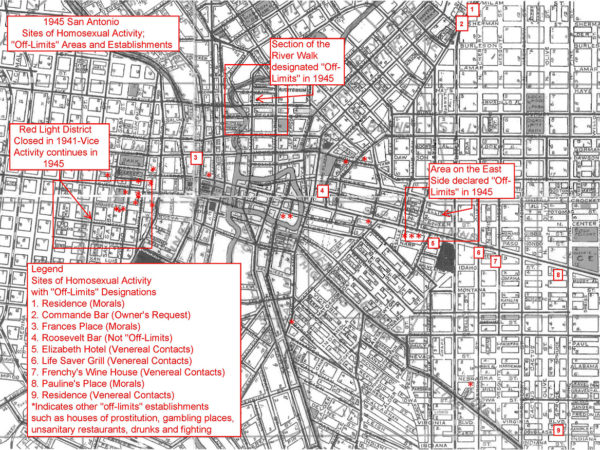
![offlimits[1]-1 #12 The Commande Bar (Owners Request) and #39 Residence at 605 Austin (Morals), 1945 Off Limits list, ITC Vertical Files, MS 366, UTSA Libraries Special Collections](https://transamerican.mcnayart.org/wp-content/uploads/2019/06/offlimits1-1-600x450.jpg)
